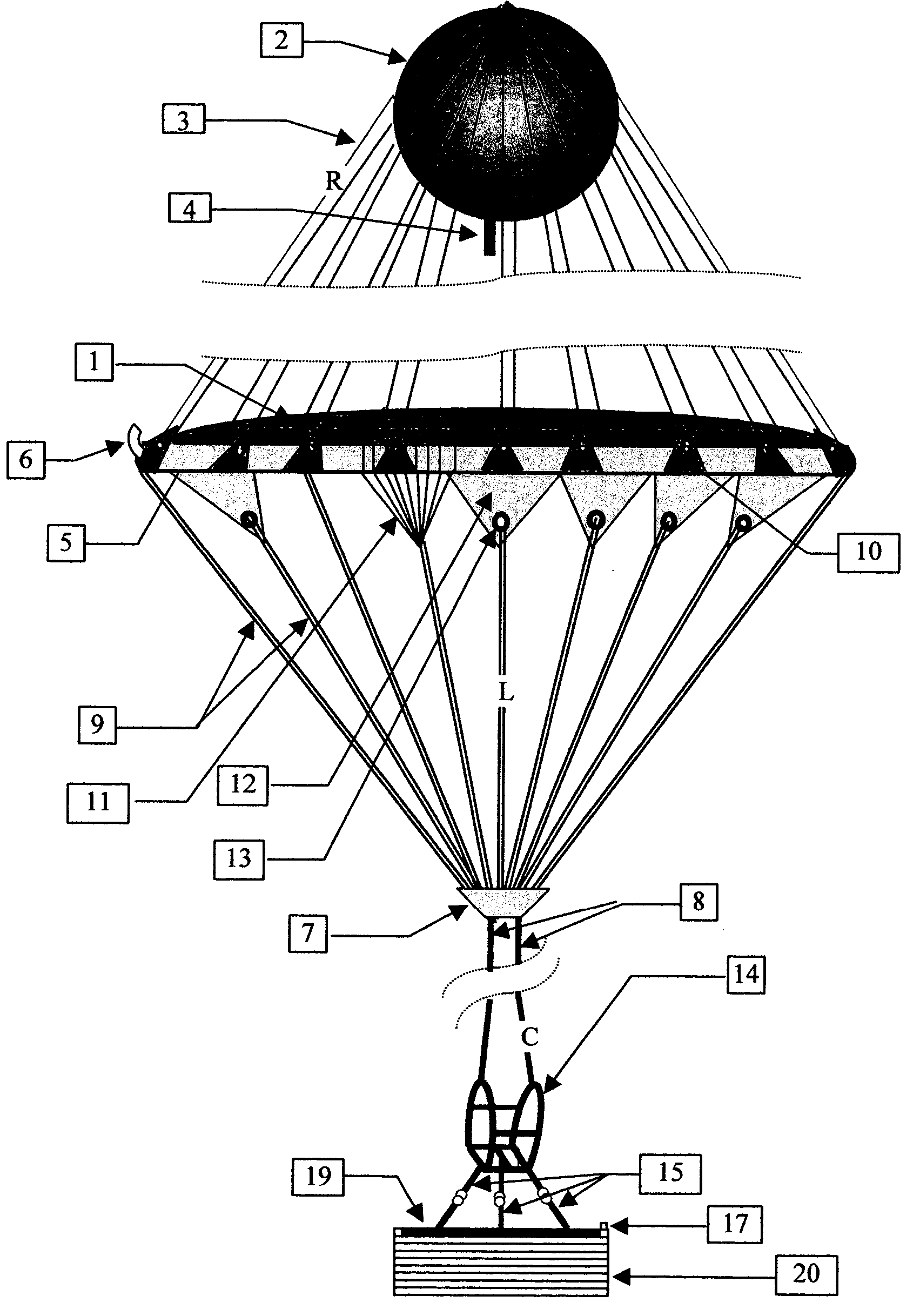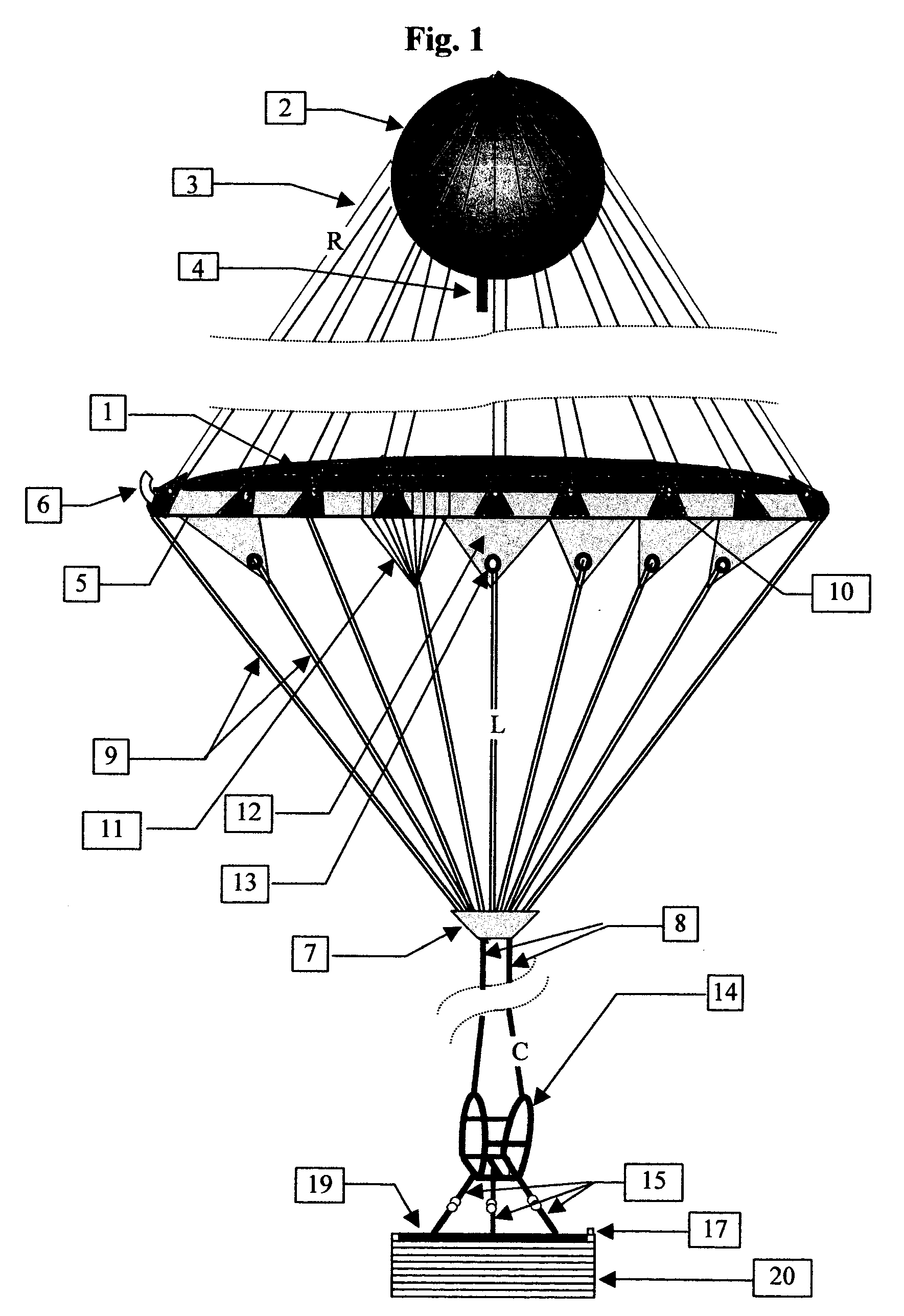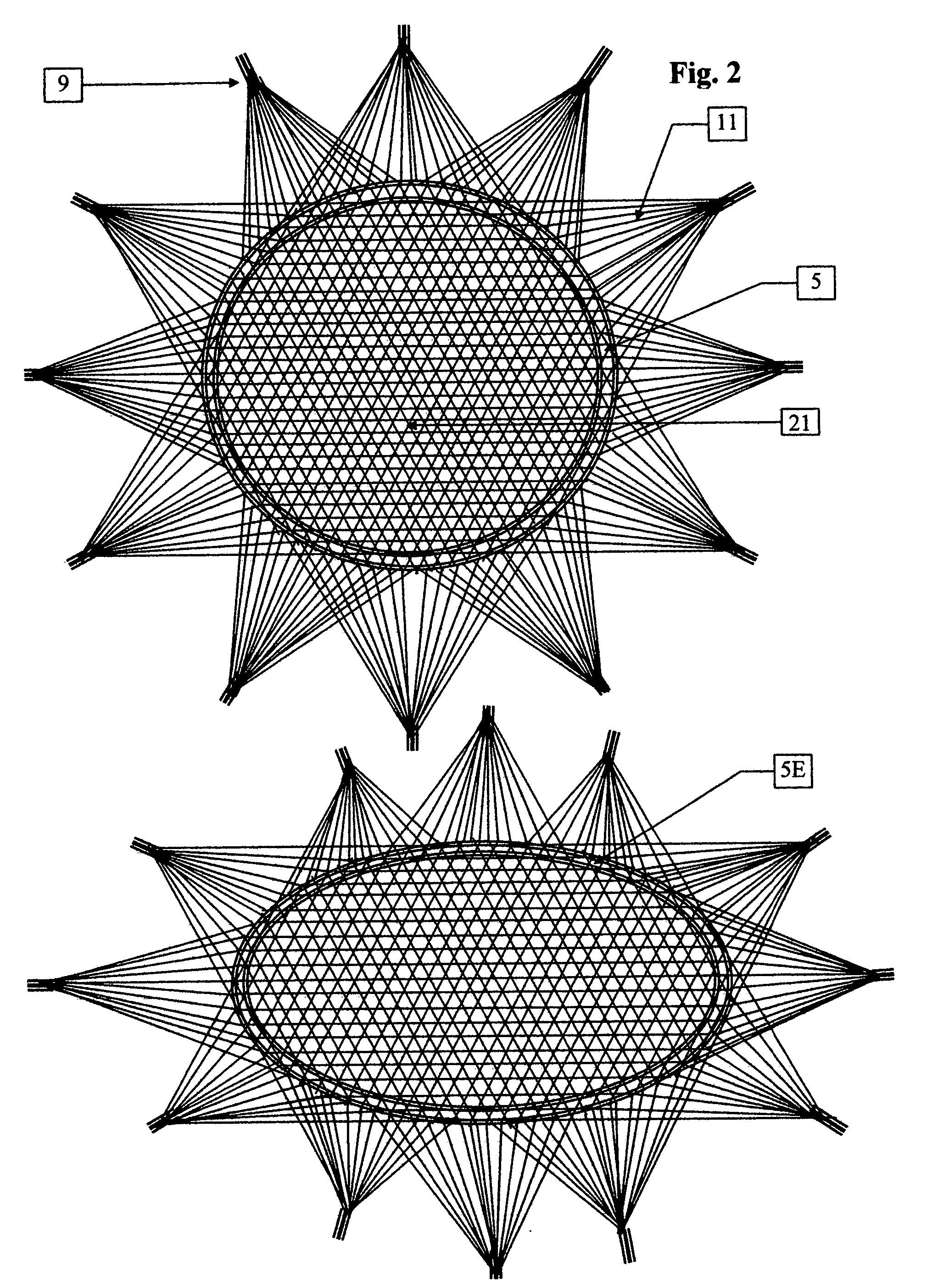Inflatable parachute for very low altitude jumping and method for delivering same to a person in need
- Summary
- Abstract
- Description
- Claims
- Application Information
AI Technical Summary
Benefits of technology
Problems solved by technology
Method used
Image
Examples
Embodiment Construction
[0033] As mentioned above, the main strategy employed in designing a parachute for low altitude jumping is to deploy the canopy before the jumper jumps into the air, thus allowing the canopy to exert its braking force immediately.
[0034] Table 1 shows the distance h1 traveled by the jumper and the resultant falling speed VC he attains by the end of the deployment time TC of a regular parachute. It shows the importance of reducing or eliminating the deployment time TC of the canopy, by pre-deploying it before the jump.
TABLE 1TC (seconds)h1 (meters)VC(meter / sec)0.51.24.914.99.8219.619.6
[0035] It has to be appreciated that a regular parachute has to develop a braking force, not only equal to the force of gravity exerted upon the jumper, but a much larger one, in order to decelerate the jumper that might have already reached a large falling velocity. This translates into a larger canopy and additional time for deceleration that limits the height from which it is safe to jump. FIG. 1 s...
PUM
 Login to View More
Login to View More Abstract
Description
Claims
Application Information
 Login to View More
Login to View More - R&D
- Intellectual Property
- Life Sciences
- Materials
- Tech Scout
- Unparalleled Data Quality
- Higher Quality Content
- 60% Fewer Hallucinations
Browse by: Latest US Patents, China's latest patents, Technical Efficacy Thesaurus, Application Domain, Technology Topic, Popular Technical Reports.
© 2025 PatSnap. All rights reserved.Legal|Privacy policy|Modern Slavery Act Transparency Statement|Sitemap|About US| Contact US: help@patsnap.com



